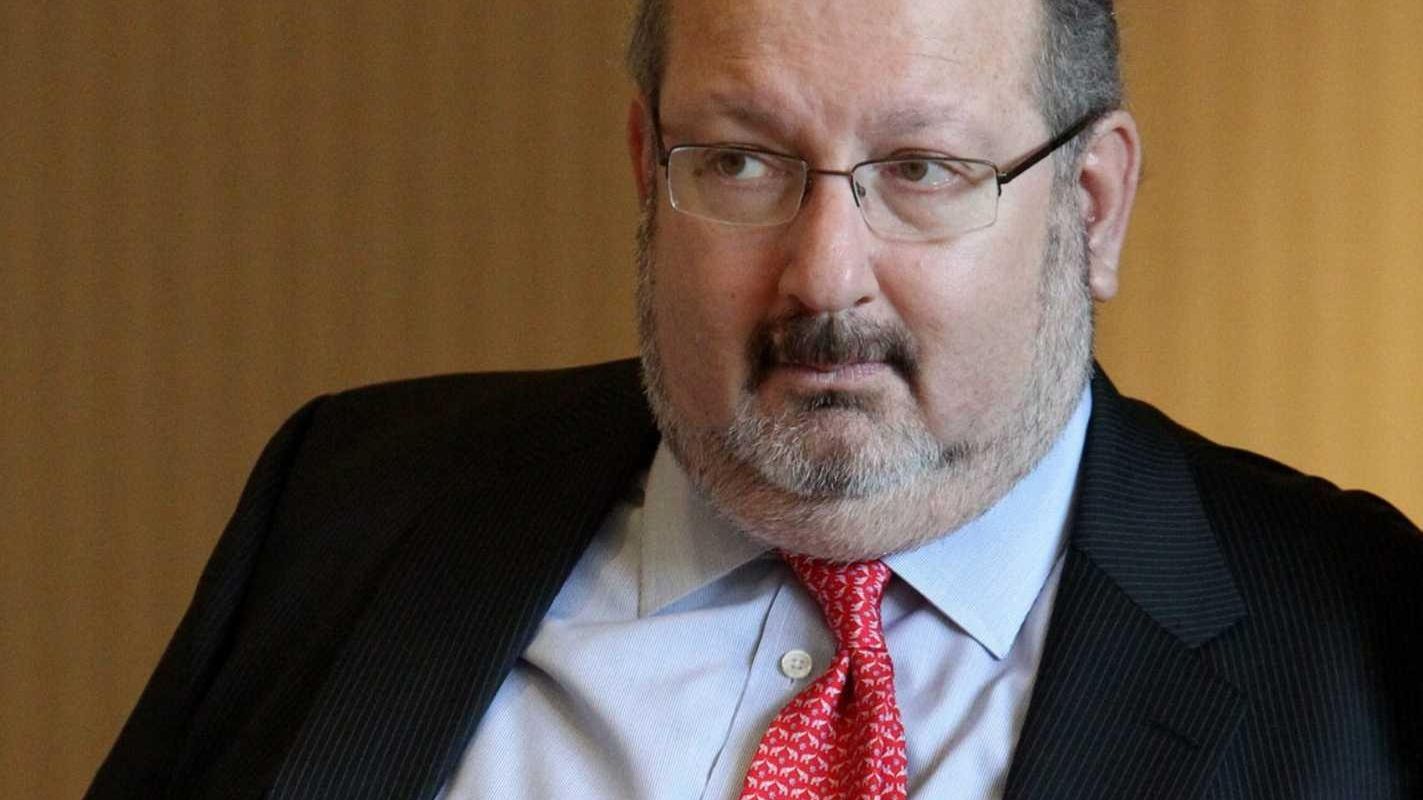When the Nassau County Democratic Party has to name judicial candidates, attorney Steven Schlesinger has been among the select group of party members making the picks.
And when Nassau judges have to make lucrative court appointments, they have repeatedly turned to Schlesinger, awarding at least $638,000 in payouts to him and others in his firm since 2010, a Newsday review of court records has found. None of those fee
awards was publicly reported as required until Newsday began its review in August.
State court rules established in 2002 prohibit party leaders from receiving court appointments, which are typically made to private attorneys who perform various duties for the court. Party leaders were barred to limit judges from doling out appointments
in return for political support. But the rules don’t stop influential party members like Schlesinger from getting the appointments, leaving the system open to the kind of abuses that the rules were designed to stop.
Bennett Gershman, a Pace Law School professor and former prosecutor who investigated judges, said that when judges tap Schlesinger, they violate the spirit of the state rules and undermine public confidence in the courts.
“He should not be getting appointments,” Gershman said. “The situation is so rife with the potential for corruption.”
Nassau Democratic leader Jay Jacobs said Newsday’s findings concerned him and that he planned to review Schlesinger’s position as his party’s legal counsel.
“I would be very upset over anything that looked like self-dealing or taking advantage of one’s party position to benefit themselves or others financially,” Jacobs said.
A complete picture of Nassau court appointments and fee awards to Schlesinger — or any other appointee — is not yet possible to provide. Newsday’s review of 150 Nassau court appointments since 2008 found that key records had not been properly filed and
made public, as required.
However, the review shows that at least 11 Nassau judges violated court rules by not publicly reporting awards to more than a dozen appointees, including Schlesinger and others with political ties.
Newsday reported in October that Schlesinger, Oheka Castle owner Gary Melius and other well-connected individuals were part of a network that benefited from court appointments and awards from Suffolk County Supreme Court justices Thomas Whelan and Emily
Pines. The judges named Schlesinger, Melius and the other members of the group to be property managers or receivers — in effect temporary landlords — at four office parks in foreclosure and awarded them more than $762,000 in fees that came from rental
income.
As in Nassau, many of the Suffolk appointments and awards were not reported, shielding the group’s activity from public scrutiny. Newsday has found that Nassau and Suffolk judges have awarded Schlesinger and his firm at least $828,000 in unreported fees
since 2010.
The state court system’s Office of the Managing Inspector General for Fiduciary Appointments and the State Commission on Judicial Conduct, which investigates complaints against judges and disciplines them, opened investigations after Newsday’s stories
on Suffolk’s court system. Those inquiries are ongoing.
In addition, Suffolk District Administrative Justice C. Randall Hinrichs pledged to fix the problems and assigned clerks to dig through files to identify appointments and awards that had not been disclosed.
Nassau Administrative Justice Thomas A. Adams declined to be interviewed and referred questions to state courts spokesman David Bookstaver. Adams is “following almost the same processes that the Suffolk County courts followed to put a laser focus on the
rules and any deficiencies in compliance,” Bookstaver said.
Schlesinger declined to comment and directed questions to CommCore Consulting Group, a Washington, D.C.-based public relations company representing his law firm, Jaspan Schlesinger.
CommCore senior vice president Nick Peters, whose company specializes in crisis management, declined to answer questions about Schlesinger’s appointments or to provide the fee awards that are supposed to be public. Peters attributed his reluctance to
a possible federal investigation, previously reported in Newsday, into how local state court judges get on the ballot.
“Our client does not believe that it makes sense to provide additional information at this time,” Peters wrote in an email.
Influential lawyer
Schlesinger wields considerable clout in Nassau politics and in the county’s legal community, and not just because of his role on the Nassau Democratic Party’s judicial screening committee.
He is a managing partner in his Garden City law firm and works for Shelter Rock Strategies, a lobbying firm that represents clients locally, in Albany and in Washington, D.C. Schlesinger has done free legal work in election-law cases for numerous candidates,he sits on a state Character and Fitness Committee, which vets individuals joining the state bar, and has chaired the Professional Ethics Committee of the Nassau Bar Association.
Although Democratic Party leader Jacobs ultimately decides which judicial candidates will have the party’s backing, Newsday spoke with five court or party officials who said Schlesinger’s opinion carries significant weight on a screening committee that
includes top Nassau Democrats, several of whom have held public jobs or elected office.
According to three people who have attended the screenings, Schlesinger typically champions a handful of contenders. This year, he lobbied to have his wife, Caryn Fink, an attorney whom he married at Oheka Castle in Huntington, nominated to run for a
County Court judgeship. She lost the election.
The state court system maintains a list of more than 500 individuals in Nassau County it has approved to handle receiverships, although many of them have gone years without receiving one assignment.
That has not been a problem for Schlesinger.
There are a variety of appointment types, including receivers who oversee distressed businesses and properties, referees who preside at foreclosure auctions, and administrators who manage the estates of those who have died with no executor. Schlesinger
has held them all.
In the past six years, court records show Nassau judges have named Schlesinger a court appointee at least five times. Because Nassau judges have not properly logged appointments and fee awards, it’s unclear whether the five represent all of Schlesinger’s
cases.
The five cases include two in which there is no record of a fee award, meaning Schlesinger’s award was not documented or the case involved no payment. In a third case, Schlesinger was appointed by a Nassau judge and collected $18,000 from a Queens judge
after the case was moved.
In another case, a Surrogate’s Court judge named Schlesinger the administrator of an estate worth $10 million. Schlesinger has earned at least $131,323 in fees from the case. Fees awarded to estate administrators are not subject to reporting requirements.
In the fifth case, Judge F. Dana Winslow awarded Schlesinger $52,325 in fees in 2010 after appointing him the previous year to be a receiver at a foreclosed Hempstead office building.
Winslow, who was re-elected in 2010 with the backing of the Democratic Party, awarded Schlesinger an additional $65,047 in 2011 and another $62,680 when the case ended in 2012.
None of the $180,052 in total fees Winslow awarded Schlesinger was reported to court administrators.
Winslow responded to questions with an email that said he’d not been given the form used to report fee awards that a clerk typically relays to parties involved in a case. He thanked a reporter for bringing the matter to his attention.
On the form Winslow referred to, judges must identify the appointee getting money and the amount awarded. A clerk then sends the form to state court administrators, and the information is made available on a dedicated public website.
Procedure skirted
That process has not been followed in Nassau.
Newsday’s review found that in most of the 150 receivership cases identified in Nassau since 2008, the appointments had been reported. However, payments to receivers were reported in only 41 of the cases.
Records show that those who received court awards that were not reported include:
– James Leonard, a partner in Schlesinger’s law firm and his lobbying group, has gotten $457,742 so far from Justice Timothy S. Driscoll in an ongoing receivership case. Jaspan Schlesinger’s public relations firm declined to make Leonard available for an interview.
– Harold Damm, the law partner of former Nassau County Legis. John Ciotti, has gotten two receiverships since 2010. In 2012 Justice Arthur Diamond approved a final payment to Damm in a case where fees totaled $56,350. Damm did not return calls for comment.
– Jerome Murphy, son-in-law to former Sen. Alfonse D’Amato, got the final portion of a $43,252 fee award in December 2011. Murphy had been elected a judge in Nassau the month before getting the award from Driscoll but had not yet taken the bench. Murphy
did not return a call for comment.
– William Garry, a Uniondale lawyer whose family has long-standing ties to the Democratic Party, has received at least four court appointments from Driscoll since 2010. A fee award of $3,250 was reported to the state in only one of the cases.
Garry said he had not yet been paid in one case, and that in the other two he’d sent the required paperwork to the Nassau clerk who is supposed to coordinate reporting.
Garry said he did not know why his awards, which he disclosed to a Newsday reporter, do not appear on the public website.
Gershman, the Pace Law School professor, said that the failure of judges to make public their awards to fiduciary appointees puts the integrity of the court system at risk, especially when it comes to courtroom regulars like Schlesinger.
“This is not accidental,” Gershman said. “That’s not what’s going on here. What’s going on here is this particular person is getting special treatment because of who he is and what he has done for the judges and what he will do in the future.”
To read the original comments on this story, click here to view the thread in Disqus.




























































